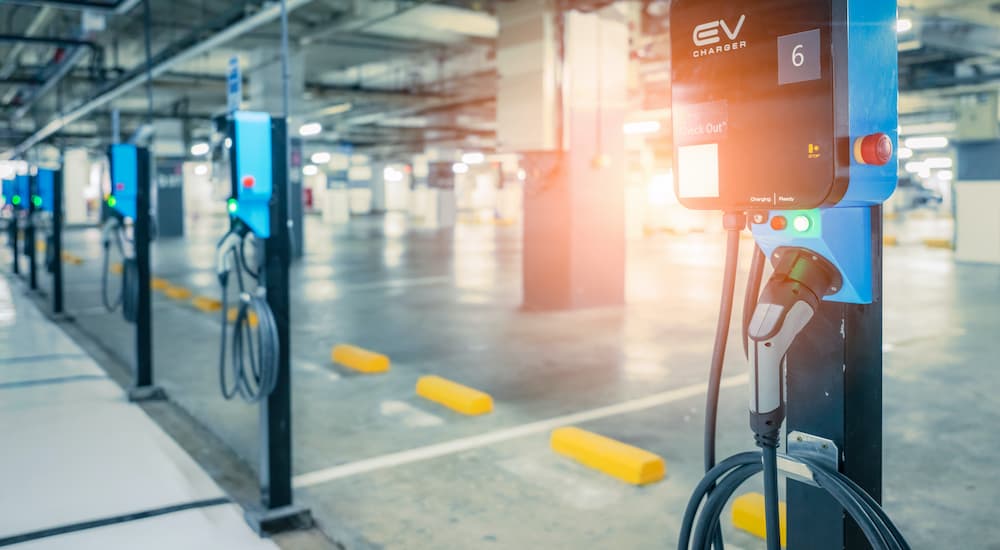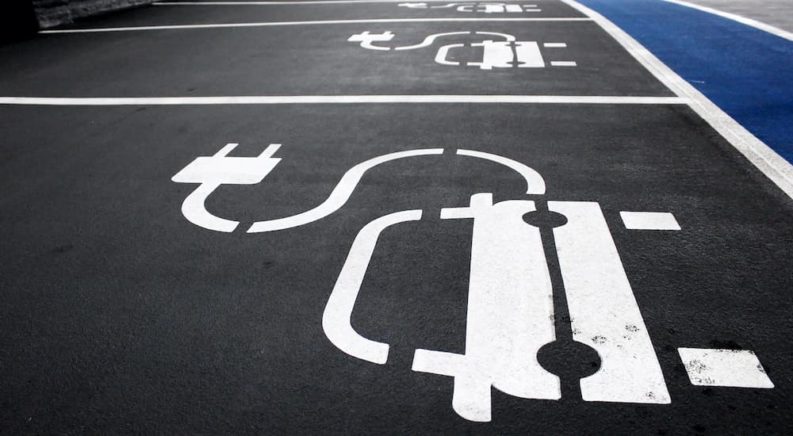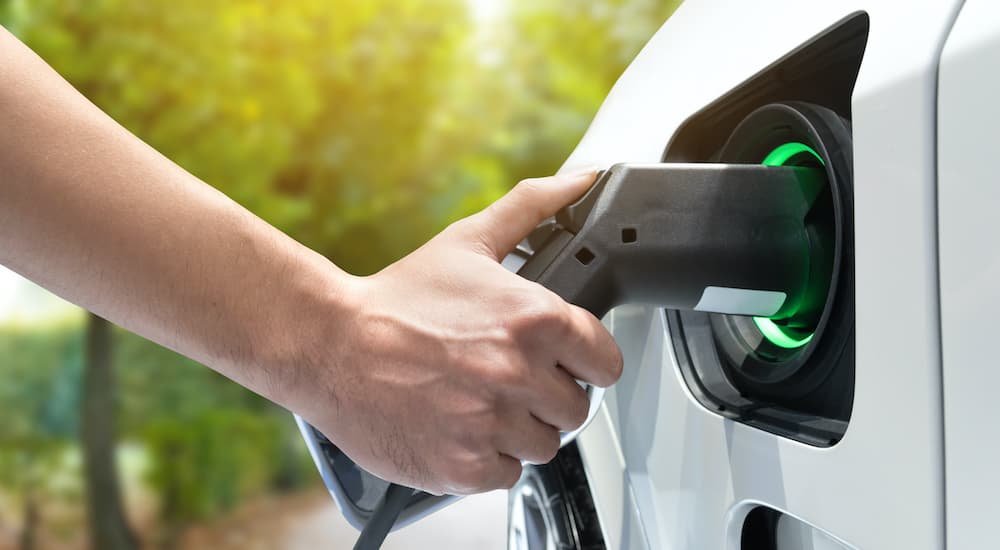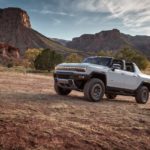Over the last decade or so, the market for Electric Vehicles (EVs) has grown from a niche largely occupied by a handful of celebrities and enthusiasts into a very real and rapidly expanding showcase for the best vehicles being designed by most companies. At this point, owning an EV is less of a statement and more of an acceptance of where the auto industry is headed. And it’s not just the auto manufacturers; championing EV development has pretty much become an industry itself, and this change in how people drive has permeated many aspects of society.
As with all other things, politics has not been left out, and there are pushes from a wide range of politicians to forward the path from Internal Combustion Engine (ICE) vehicles to EVs. One of the biggest steps forward on this road to a fully-EV automotive future was recently announced when the Biden Administration revealed a plan for a nationwide network of EV chargers. It’s no secret that the proliferation of EV charging stations has been going on for years now, and this network continues to expand. With this recent announcement, however, the Federal government is going all-in with a push that should, in theory, make owning an EV easier than ever.
The EV Charging Problem
Ask an EV enthusiast about the reasons to buy or not buy an all-electric model, and you’ll probably hear a lot about instant torque, cutting down carbon footprints, and much more. For a lot of people, however, all of those perks are secondary to something else, a concern about just how feasible owning an EV really is. At the top of the list for many potential EV owners is a worry about being able to easily charge their EV while going about their daily lives. Some of this has been alleviated through the development of better batteries that allow an EV to go 300 or even 400 miles from a full charge, but that’s not the whole solution.
The so-called “range anxiety” felt by many potential EV buyers really comes down to worries about being able to get where you need to go and not get stranded somewhere. Realistically, there’s no reason to worry more about the range of an EV model than any ICE vehicle since they’re not exactly known for going much more than about 300 miles on a full tank of gas, either. The issue, of course, is that people know what to expect from a traditional vehicle. You fill up your tank, drive and drive, and then as it gets low, you go to one of the bajillion gas stations throughout the country to fill up the tank again.
EV models function essentially the same way, simply swapping “charge the battery” in for “fill up the tank.” The problem, of course, is the sense of the unknown that comes with an EV––will you be able to find a charging station when you need one? This has been getting easier with numerous companies building more stations across the country, but the concern––the anxiety––has still remained for many people.

A Nationwide Solution
Recently, the Federal government took steps to help alleviate this range anxiety by introducing a new initiative designed to greatly increase the number of charging stations across the country. They hope that this, combined with the increased range of superior batteries in new EV models, will alleviate this anxiety once and for all. Whether this will achieve that remains to be seen, but there’s no denying that it’s a step in the right direction.
According to the plans released by the Joint Office of Energy and Transportation––a new government agency established to help oversee this new program––a total of $5 billion will be provided to states in order to help fund the building of a nationwide network of EV charging stations. The initial plan is designed to focus on the interstate highways that already run throughout this country, creating charging stations along it so that people can easily pull off when they need to recharge their vehicle––similar to the rest stops and gas stations that already exist. Once complete, there would be a charging station located every 50 miles with at least four chargers at each spot.
Not only does the plan require at least four chargers at each station, but they need to be reliable, with at least one of them operating more than 97% of the time. They also have to be designed and built in a way that minimizes their impact on the electric grid to ensure they’re being developed in the most responsible way possible. Finally, these stations need to use chargers that use the Combined Charging System (CCS), which is essentially the EV charging version of a USB connector––creating a single charging connection that any vehicle can use.
At the moment, more than 100,000 charging stations are already built and ready for use across the country. Once this plan is complete, there would be a network of 500,000 stations across the US––the target goal on this number is 2030. In placing these, states are encouraged to focus on sites near convenience stores, restaurants, and visitor centers––again, like rest stops.
Is This a One-Step Solution?
The current plan, with its $5 billion bankroll, is only the first step in this massive enterprise. If all goes well, then once this program is completed and a nationwide network of chargers along highways is in place, then the focus will shift to other areas. After all, you’re not always using a highway, so this sort of solution needs to just be part of a bigger picture.
This picture will begin to come together with another $2.5 billion that will be provided as grants to states in order to build additional chargers in rural and underserved areas. This will likely be handled on a case-by-case basis––part of why they’ve established the new Joint Office of Energy and Transportation––in order to hopefully handle the funds properly. This would allow for rural and agricultural areas to receive charging stations, opening up greater opportunities for EV use across the country.
There’s also some wiggle-room in this program allowed for areas that lack access to the nationwide power grid. This is specifically meant for the goal of having a charging station every 50 miles––stations still need to be built, but the distance between them could be greater in such areas. The end result will be a fairly long process, but it also took a long time for all of the gas stations we have for use today to come about.
What Does This Mean for EV Enthusiasts?
If you’re already someone who loves the experience of driving an EV model, then this isn’t about to change your mind, but it can certainly make planning your next road trip a lot easier (maybe not your next road trip, but you know what I mean). More charging stations will make it a lot simpler to get where you need to go and stop when you need to charge your vehicle. It might not impact your daily commute very much, but it’s a step toward a brighter EV future.
For those folks who are on the fence about embracing the EV lifestyle, this should hopefully give them a push toward leaving the gas pump behind. It doesn’t solve every problem, like owning an EV in a situation where you can’t easily charge at home overnight, but it helps with the big picture. Range anxiety might persist a while, simply because it’s such an established mindset at this point, but I imagine it will become far less prevalent. If nothing else, it’s a step in the right direction and reinforces the moves the auto industry has been making the last few years.





